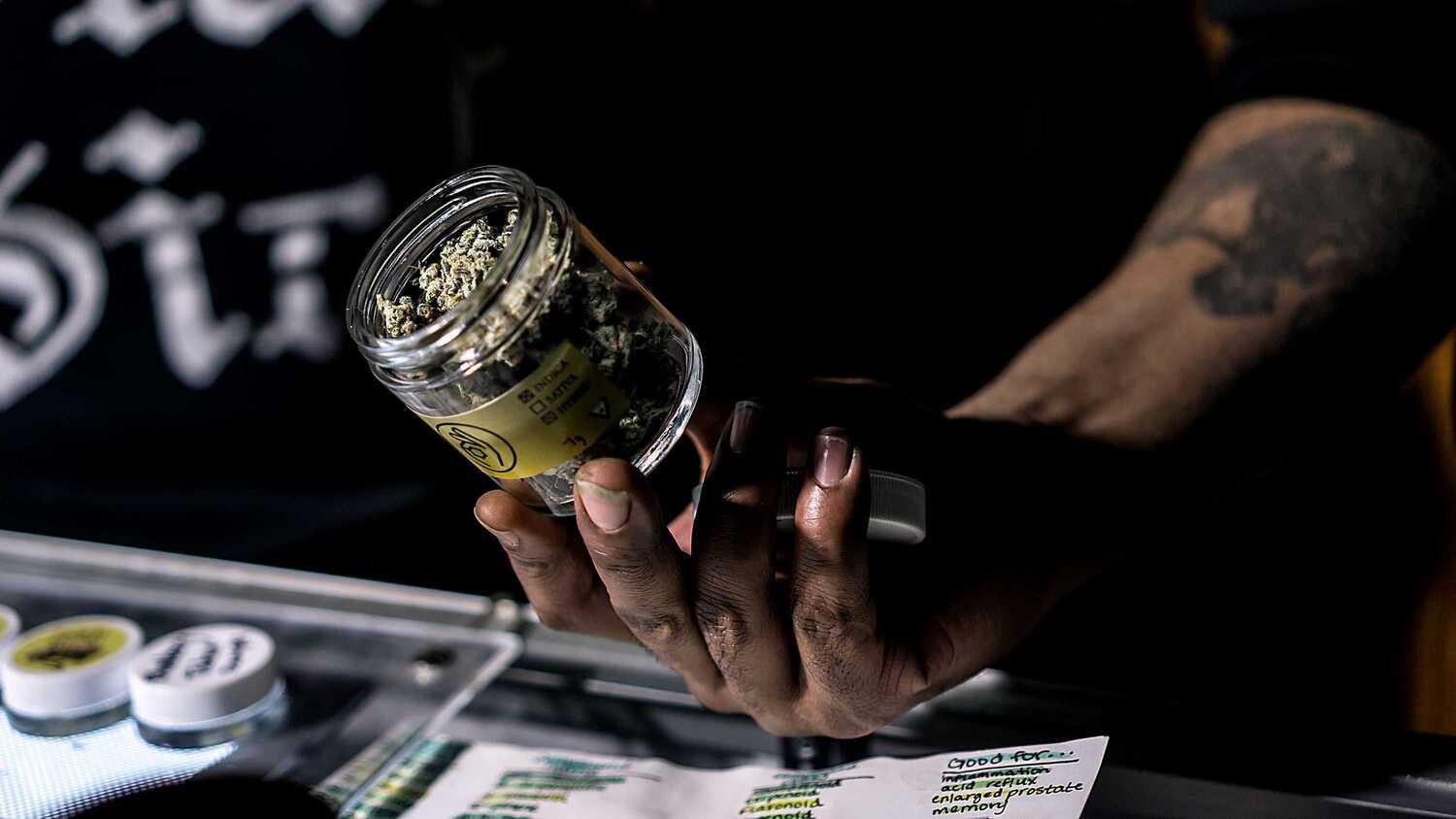- Fact-checked by Dr. Desiree Granados

Recent reports have shown that the United States has the third-highest cannabis use rate. At 17.4% prevalence use among adults, the U.S. is only surpassed by Israel (27%) and Jamaica (18%).
Today, medical cannabis is legal in 37 U.S. states, including Illinois. On the other hand, only 21 states allow the recreational use of the plant’s products.
As a result of this per-state legalization, the U.S. leads the world in legal marijuana sales, with California generating the highest revenue. Analysts suggest that total nationwide sales could reach $25 billion by 2025.
But this high usage rate doesn’t mean any American citizen can consume marijuana. For one, the law requires cannabis dispensaries to serve only adults who’re at least 21 years of age (or 18 in some states). If you’re of legal age, this article will discuss everything you need to know before setting foot in a marijuana dispensary.
What is a Cannabis Dispensary?
A cannabis or marijuana dispensary is a legal establishment that sells cannabis products to legally eligible customers. The marijuana products available to cannabis consumers in these stores include pre-rolled joints, topicals, vape items/vaporizers, creams, dabs, terpenes, dried flowers, concentrates, tinctures, and edibles.
Stores only operate in an area where the consumption of marijuana products is legal. For instance, the state of Illinois has legalized both medical and recreational cannabis.
You can purchase weed provided you meet the conditions of your state laws. For recreational use, the main factor that sellers consider is your age. On the other hand, you must have a valid medical marijuana card if you plan to use the product to treat a health condition.
Similarly, dispensaries are subject to strict regulations. They must comply with state and local laws regarding the sale and distribution of cannabis products.
The services you may find at a cannabis dispensary vary with its business model and local regulations. But generally, they include the following:
- They sell cannabis products.
- They offer consulting services to help consumers select suitable options for their needs and preferences. Some, like the nuEra dispensary in Chicago, allow you to book private sessions online.
- They advise customers on different types of cannabis products, their effects, and how to use them safely.
- They also have a customer service section that answers various questions and resolves issues related to products and transactions.
- Most marijuana dispensaries offer delivery services, but this depends on the location and business model of the store.
- Modern dispensaries have websites where you can order online for pickup or delivery.
Apart from these business-related services, some dispensaries organize community outreach events. These programs help promote responsible cannabis use and build relationships with customers and shareholders.
Pot Shopping in Chicago
Many people associate buying marijuana with dingy apartments and neighborhoods, as most movies depict. However, the legalization of the herb in Illinois has enhanced the growth of clean, consumer-friendly pot shops and franchises.
But despite the organized nature of these retail environments, many still find their first dispensary visit slightly daunting. So, what should you expect at a weed shop?
Finding a Marijuana Shop
Of course, before shopping, you’ll need to find a marijuana dispensary. Among the factors you should consider when choosing these stores is their vicinity.
But remember, closer doesn’t necessarily mean better. Hence, you may need to explore other options in other areas to see if you can find one that fits your needs.
Reading online reviews and getting recommendations from friends will be a good idea too. Focus mainly on the level of marijuana knowledge of the budtenders. The types and quality of cannabis products they sell should also be on your list.
Remember, quality pot costs a premium, but it’s worth every penny.
Lining Up Outside the Store
After selecting your ideal store, the next step is to visit it or order online. If you’re a first-timer, availing yourself of products at the store would be the best option.
However, you may find a line of people outside the shop waiting for their turn. Why would there be a long queue? First, many consumers visit these stores every day. Since Illinois legalized recreational marijuana in 2020, it’s seen sales worth more than USD$2 billion.
The queues may have reduced significantly due to the increased number of pot shops. In January 2020, there were 45 dispensaries, but today you can choose from 113 licensed retailers statewide.
But despite these changes, most dispensaries still allow a few people inside at a time. So, you’ll still likely queue outside for a few minutes.
Checking In
Once inside, staff will ask for your national identification card. It’s a standard procedure to confirm that you’re at least 21 years old, Illinois’s primary legal requirement.
An employee will also verify your residency, a determinant of your cannabis possession limit. Illinois residents can purchase 30 grams and 5 grams of cannabis flowers and concentrate, respectively.
You can also possess up to 500 milligrams of tetrahydrocannabinol (THC) in edibles and tinctures. For example, a container has 10 gummies, each with 10 mg of THC. So, the entire container has 100 mg of THC, meaning you can only purchase 5 at a time.
If you’re a non-resident, your limit is half that of Illinois residents. So, you can only buy 1.5 and 2.5 grams of cannabis flower and concentrate. Your edibles and tinctures should contain up to 150 milligrams of THC.
After the ID verification, you must tell the staff whether you want recreational or medical cannabis. If it’s the latter, you must produce your medical marijuana card (MMJ).
Moving on to the Sales Area
After the staff has confirmed all your details, they’ll usher you into the next stage, the sales area. Here, you’ll meet a budtender who’ll take you through the selection and purchasing process if you’re a first-timer.
Like a typical store, you can browse various products on the shelves, including pre-rolls, tinctures, and flowers. You can even smell the strains to see which one meets your needs.
But this depends on the size of the store and its policies. So, ask before making any of the mentioned steps.
If they don’t allow smelling, you can ask the budtender. Describe your needs and let them suggest the best product for you. They can also provide you with information about different strains of marijuana, their effects, and how to consume them.
Select the ideal product for you based on the budtender’s advice and your experience, then move to the next step.
Paying
After you’ve picked your items, you’ll be expected to pay for them before leaving the store. The payment process will vary from dispensary to dispensary, but most of them only take cash. More on this later in the article.
Leaving the Dispensary
You can now leave the dispensary with your goods once everything is in order and the payment is processed successfully. Ensure that you don’t exceed the legally acceptable possession limits.
Ignoring this regulation is considered a misdemeanor offense and can result in fines, probation, or jail time, depending on the amount possessed. Possession by minors is also prohibited, with penalties ranging from fines to community service and drug education programs.
While marijuana possession is legal in Illinois for adults, it’s still illegal at the federal level. Therefore, possession or use on federal property or by individuals contingent on national drug testing policies is subject to federal marijuana laws.
Marijuana Payment Options
As mentioned earlier, you may have limited payment channels when checking out at a marijuana dispensary. That’s because marijuana is still illegal under federal law in the United States, despite being legalized for either medicinal or recreational purposes in many states.
Of course, this creates several legal and financial challenges for businesses that deal with marijuana products, including payment processing. One of the biggest challenges for marijuana businesses is finding a payment processor that will work with them.
Many traditional payment processors, such as credit card companies, are hesitant to work with marijuana businesses due to the legal gray area surrounding the industry. As such, it’s difficult for customers to purchase marijuana products using credit cards or other electronic payment methods.
So, which channel will you use to pay for your marijuana products?
- Cash is the most viable method because it’s easy and doesn’t require any extensive paperwork. It allows marijuana businesses to receive their revenue without getting into trouble with the law.
- A cashless ATM is another channel you might want to try. But this has since become challenging following the recent crackdown on “point of banking” systems.
- Another option is a specialized payment processing service that caters specifically to the cannabis industry.
- Some businesses are also accepting cryptocurrency, although this method isn’t common yet.
Despite the legal challenges, there are several hacks around the banks’ prohibition of marijuana-related transactions. But it’s still a good idea to carry cash, as this is a universal payment method.
Understanding Marijuana
Although many people consume marijuana, most of them don’t know the chemistry side of it. It’s important to understand this aspect of cannabis before you shop at a dispensary. Weed is typically a dried mixture of hemp flowers.
A chemical compound found in the cannabis plant, delta-9-tetrahydrocannabinol (THC) is the primary psychoactive component responsible for producing the “high” associated with cannabis use.
When THC is ingested, either by smoking or consuming edibles, it sticks to cannabinoid receptors in the brain, producing a range of effects, such as mood changes, altered perception, and relaxation. THC is also known for its potential medical benefits as well, including pain relief, reduced inflammation, and improved appetite.
How is CBD Different from THC?
CBD (cannabidiol) is another chemical compound found in the cannabis plant, but it doesn’t produce the psychoactive effects associated with THC. Unlike THC, CBD is non-intoxicating, which means it may not make you feel “high” or impair your cognitive abilities.
Instead, CBD is believed to have potential therapeutic benefits for a range of health conditions, including anxiety, depression, pain, and inflammation. Research suggests that CBD may interact with the body’s endocannabinoid system (ECS) to help regulate various physiological processes, such as mood, appetite, and sleep.
Cannabidiol products are widely available in many states in the US. However, their legal status varies depending on the state. In some places, they’re legal for medical or recreational use, while in other areas, they may be restricted or illegal.
Marijuana Strains
Here are the most common weed strains you’ll find at any cannabis dispensary:
- Sativa strains have energizing and uplifting effects, making them a popular choice for daytime use. They produce cerebral high, with enhanced creativity, focus, and sociability.
- Indica strains are popular for their relaxing and sedative effects. They’re ideal for nighttime use.
- Hybrid strains are a cross between sativa and indica strains and are designed to produce a combination of both effects. The characteristics and effects of hybrid strains can vary widely depending on the specific genetics of the strain. Some may lean more toward the energizing effects of sativa, while others may lean more toward the relaxing effects of indica.
Forms of Weed
You’ll notice many forms of cannabis at the dispensary, and that’s because there are different ways to consume THC. The most common ones you need to understand are:
- Edibles: They’re treats or candies combined with THC. Since they go through your digestive system, it may take longer to experience the effects of THC. Examples include gummies, chocolate, and hard candy.
- Cannabis flower: Flower is always considered weed in its pure form. It’s often consumed through smoking.
Conclusion
The first time you visit a cannabis dispensary can be overwhelming, and understandably so. However, you can streamline it by learning a few things before you go shopping.
First, ensure you meet the requirements set by your state. In Illinois, for example, you must be at least 21 years old or have a marijuana medical card if you’re buying products for medical use. Payment options may vary from one dispensary to another, but the products you’ll get there are pretty much the same across the board.
If you’re based in Chicago, note that smoking or consuming marijuana in public is illegal, so you’ll need to consume your products in private. Additionally, exceeding the allowed possession limits may put you in trouble.
As long as you follow the guidelines set forth in this article, your first visit to a dispensary should be a breeze.
How we reviewed this article:
- Annual cannabis use rates in leading countries worldwide in 2020
https://www.statista.com/statistics/1015296/rate-of-cannabis-use-worldwide-country/ - Where Is Marijuana Legal? A Guide to Marijuana Legalization
https://www.usnews.com/news/best-states/articles/where-is-marijuana-legal-a-guide-to-marijuana-legalization - 7 Cannabis Products On the Rise
https://www.thestreet.com/lifestyle/5-cannabis-products-on-rise-14578907 - What is a Marijuana Dispensary?
https://hightimes.com/guides/what-is-a-marijuana-dispensary/ - Chicago Dispensary
https://nueracannabis.com/dispensaries/il/chicago/ - Cannabis sales are raking in billions in Illinois, but Black and Brown entrepreneurs are still in limbo with license delays
https://www.cbsnews.com/chicago/news/cannabis-sales-are-raking-in-billions-in-illinois-but-black-and-brown-entrepreneurs-are-still-in-limbo-with-license-delays/ - Federal Marijuana Laws
https://www.findlaw.com/criminal/criminal-charges/federal-marijuana-laws.html - How does CBD interact with the ECS?
https://www.healthline.com/health/endocannabinoid-system#cbd
Current Version
April 3, 2023
Written By
Jake Peter
Fact-checked By
Dr. Desiree Granados
Editorial Process
Our Editorial Process
Other Posts About Medical Marijuana

Jake Peter received his journalism degree from Emerson College and has been writing content for the Sanctuary Wellness Institute since 2021. He is passionate about all things cannabis.








